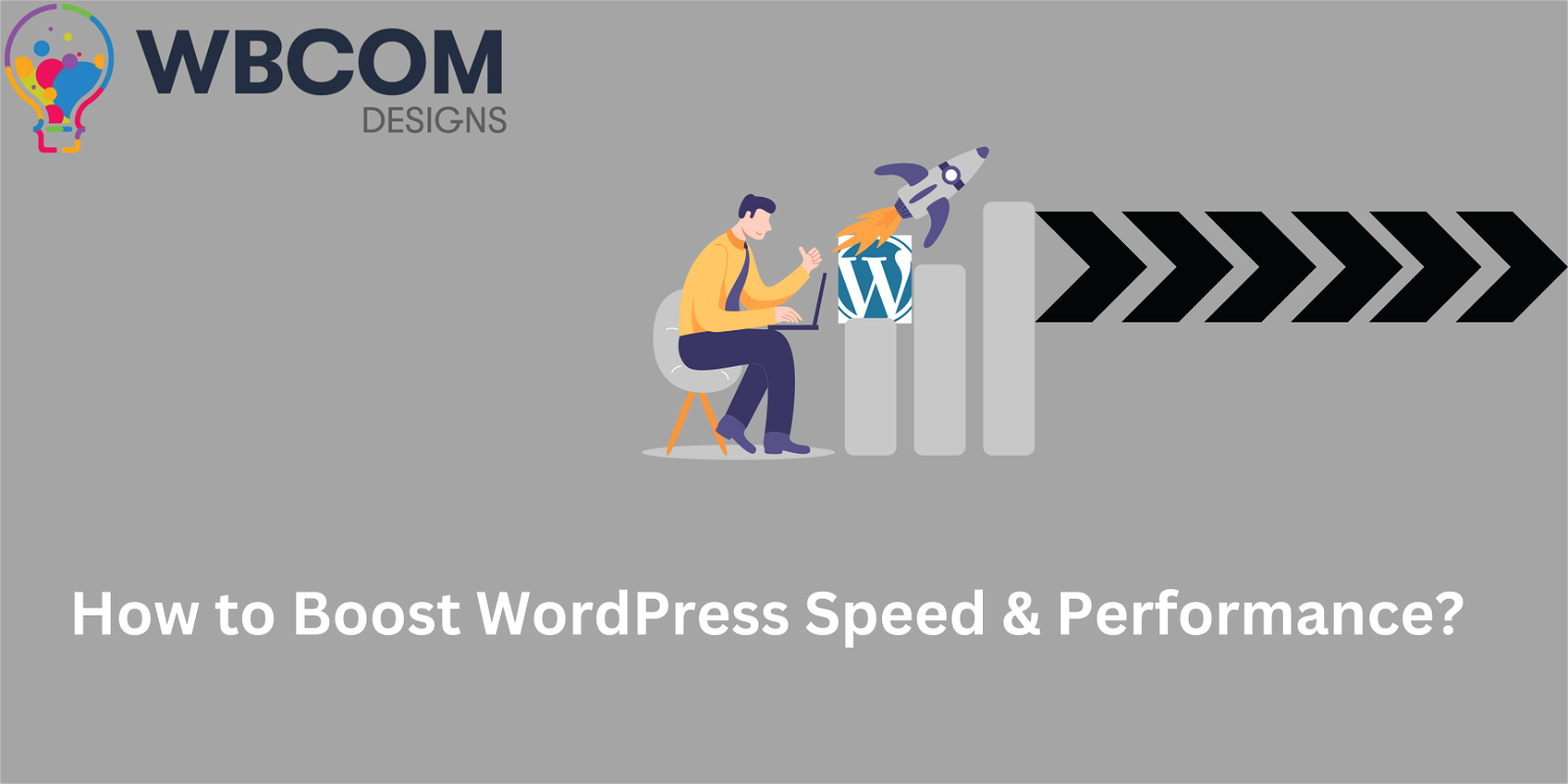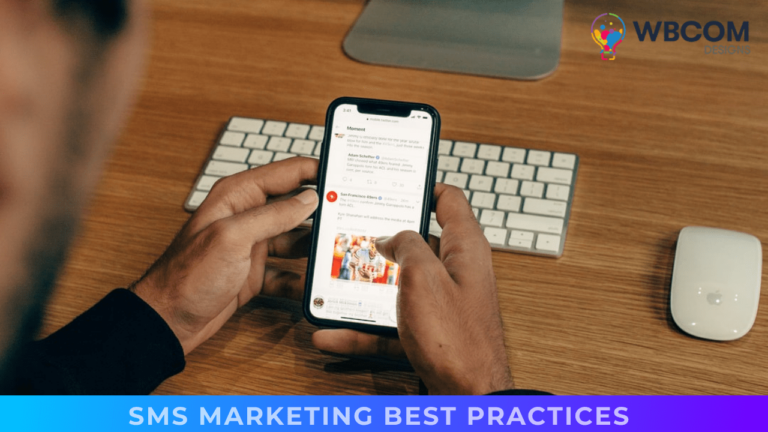WordPress is a powerful and versatile platform for building and managing websites, but it can sometimes suffer from performance issues. Slow loading times and sluggish performance can frustrate visitors and harm your site’s search engine rankings. Fortunately, there are several strategies you can employ to boost WordPress speed and performance. In this article, we’ll explore 10+ useful tips to help you optimize your WordPress website.
Table of Contents
ToggleImpact of Slow-Loading Websites on User Experience and Conversions:
In today’s fast-paced digital world, users expect websites to load quickly and provide a seamless browsing experience. However, many websites still struggle with slow loading times, which can have a significant impact on user experience and conversions.
When a website takes too long to load, it can be incredibly frustrating for users. Research has shown that 40% of users will abandon a website if it takes more than three seconds to load. This means that slow-loading websites are at risk of losing a significant portion of their potential audience before they even have a chance to engage with the content.
In addition to frustrating users, slow-loading websites can also have a negative impact on conversions. Users are less likely to make a purchase, fill out a form, or engage with the content if they have to wait for the website to load. In fact, a one-second delay in page load time can result in a 7% reduction in conversions.
Furthermore, slow-loading websites can also affect a website’s search engine rankings. Google has indicated that page speed is a factor in their search algorithm, meaning that slow-loading websites may be penalized in search results.
To combat the impact of slow-loading websites, it’s important for businesses to prioritize website performance and invest in tools and strategies to improve load times. This can include optimizing images, minifying code, leveraging browser caching, and using content delivery networks to distribute website assets.
Ultimately, the impact of slow-loading websites on user experience and conversions cannot be underestimated. Businesses must prioritize website performance to ensure that they are not losing potential customers and revenue due to slow load times. By providing a fast and seamless browsing experience, businesses can improve user satisfaction and increase the likelihood of conversions.
Also Read: Can I make a dynamic website in wordpress?
How to Check Your WordPress Site Speed?
If you have a WordPress website, it’s crucial to ensure that it loads quickly in order to provide a positive user experience and improve search engine rankings. There are several tools and methods available to check your site’s speed and identify areas for improvement.
One of the most popular and user-friendly tools for analyzing website speed is Google PageSpeed Insights. Simply enter your website URL into the tool, and it will generate a report that highlights areas where your site is performing well and areas that need improvement. The report also provides detailed recommendations on how to address these issues, such as optimizing images or leveraging browser caching.
Another effective tool for checking your WordPress site speed is GTmetrix. This tool provides a comprehensive analysis of your site’s performance, including page load time, total page size, and the number of requests. It also provides actionable insights and recommendations for improving your site’s speed, such as minifying CSS and JavaScript files or leveraging browser caching.
In addition to using these tools, there are several best practices you can follow to improve your site’s speed. This includes optimizing images, using a content delivery network (CDN), and minimizing the use of plugins and external scripts. You can also enable caching and compression to reduce the load time of your website.
Regularly monitoring your site’s speed is essential for ensuring optimal performance. By using the tools and methods mentioned above, you can identify areas for improvement and take action to optimize your WordPress website for speed. This will not only improve user experience and search engine rankings but also help you stand out in today’s competitive online landscape.
Also Read: How to Remove Parent Slug From Child Page URL in WordPress?
Why Optimizing WordPress Performance Is Important?
Optimizing the performance of your WordPress website is crucial for a number of reasons. Firstly, a slow-loading website can be incredibly frustrating for users, leading to a higher bounce rate and potentially lower search engine rankings. In today’s fast-paced world, a website that takes more than a few seconds to load is simply unacceptable.
In addition, a slow website can have a negative impact on user experience, which can in turn harm your brand’s reputation. No matter how great your content is, if users are struggling to navigate your website due to slow load times, they are unlikely to stick around.
Optimizing the performance of your WordPress website can also have a significant impact on your site’s search engine optimization (SEO). Page load speed is a key factor in Google’s ranking algorithm, so a slow website could affect your search engine rankings. By improving your website’s performance, you can increase your chances of ranking higher in search engine results pages, leading to increased organic traffic to your site.
Furthermore, an optimized website can also save you money in the long run. By reducing the amount of data that your website consumes, you can lower your hosting costs and potentially reduce the amount of bandwidth you need to purchase.
Overall, optimizing the performance of your WordPress website is essential for providing a positive user experience, improving your search engine rankings, and saving money. Whether it’s through implementing caching, optimizing images, or using a content delivery network, there are a number of steps you can take to improve your website’s performance and ensure that it runs as efficiently as possible.
Also Read: Can WordPress Handle Heavy Traffic?
10 Useful Tips To Optimize your WordPress Website:
1. Choose a Reliable Hosting Provider: Your choice of hosting provider can have a significant impact on your site’s speed and performance. Look for a hosting company that offers fast and reliable servers, as well as scalable resources to accommodate traffic spikes and increase website speed.
2. Optimize Images: Large, unoptimized images can significantly slow down your website. Use image optimization plugins or tools to reduce file sizes without compromising quality. Additionally, consider lazy loading images to improve page loading times.
3. Utilize Browser Caching: Enabling browser caching allows users to store static files, such as images and CSS, on their local devices. This reduces the need to re-download these files each time they visit your site, resulting in faster page load times.
4. Minify CSS and JavaScript: Minifying your CSS and JavaScript files by removing unnecessary spaces, comments, and line breaks can reduce file sizes and improve loading times. Use plugins or online tools to automate this process.
5. Implement a Content Delivery Network (CDN): A CDN distributes your website’s static files across a network of servers located around the world, reducing the distance and time it takes for data to travel from the server to the user’s browser.
6. Enable Gzip Compression: Gzip compression reduces the size of your website’s files, allowing for faster transmission between the server and the user’s browser. Most hosting providers offer Gzip compression as a standard feature.
7. Use a Lightweight Theme: Choose a well-coded, lightweight theme that prioritizes speed and performance. Avoid themes with excessive features and bloated code that can slow down your website.
8. Limit External Scripts: Minimize the number of external scripts and third-party resources used on your website, such as social media plugins, analytics tools, and advertising scripts. Each additional script can add to page load times.
9. Update WordPress and Plugins: Regularly updating WordPress and its plugins ensures that you have access to the latest performance improvements, bug fixes, and security enhancements.
10. Disable Pingbacks and Trackbacks: Pingbacks and trackbacks can generate unnecessary requests and increase server load. Disable these features in your WordPress settings to improve site performance.
By implementing these tips, you can effectively boost the speed and performance of your WordPress website, providing a better user experience and improving your site’s search engine rankings. Continuously monitoring and optimizing your site’s performance will ensure that it remains fast and responsive for your visitors.
Understanding Core Web Vitals For WordPress Speed Optimization:
WordPress is one of the most popular platforms for creating websites and blogs. However, ensuring that your WordPress site is optimized for speed is crucial for providing a positive user experience and improving your search engine rankings. When it comes to optimizing your website’s speed, understanding Core Web Vitals is essential.
Core Web Vitals are a set of specific factors that Google considers important in a website’s overall user experience. These include loading performance, interactivity, and visual stability. By paying attention to these key metrics, you can ensure that your website not only loads quickly but also provides a smooth and enjoyable user experience.
One of the most important Core Web Vitals is the Largest Contentful Paint (LCP). This measures the loading performance of your website by focusing on the largest element on the page, such as an image or a video. To optimize your LCP, you can take steps such as optimizing your images, leveraging browser caching, and using a content delivery network (CDN) to deliver your content more efficiently.
Another important Core Web Vital is the First Input Delay (FID), which measures the interactivity of your website. This refers to the time it takes for your website to respond to user input, such as clicking on a button or a link. To improve your FID, you can reduce third-party scripts, prioritize critical resources, and use modern web technologies to make your website more responsive.
Lastly, the Cumulative Layout Shift (CLS) is a Core Web Vital that measures the visual stability of your website. This means minimizing unexpected layout shifts that can be disruptive to the user experience. To address CLS issues, you can ensure that all images and videos have specified dimensions, avoid placing ads above the main content, and use CSS to reserve space for dynamically loading content.
Understanding and optimizing for Core Web Vitals is crucial for improving your WordPress site’s speed and overall user experience. By focusing on these key metrics, you can ensure that your website loads quickly, responds to user input efficiently, and maintains visual stability. This, in turn, can lead to higher search engine rankings, better user engagement, and ultimately, a more successful online presence.
Conclusion:
Optimizing the speed and performance of your WordPress website is essential for providing a positive user experience, improving search engine rankings, and ultimately achieving online success. By following the tips outlined in this article, such as choosing a reliable hosting provider, optimizing images, utilizing browser caching, and implementing a content delivery network, you can significantly enhance your website’s speed.
The impact of slow-loading websites on user experience and conversions cannot be underestimated. Slow websites risk losing a substantial portion of their audience, leading to decreased engagement and conversions. Moreover, search engines like Google factor in page speed when determining rankings, making optimization crucial for maintaining visibility in search results.
Regularly checking your WordPress site’s speed using tools like Google PageSpeed Insights and GTmetrix, and implementing best practices such as image optimization, CDN usage, and minimizing external scripts, will help identify areas for improvement. This proactive approach ensures that your website remains fast, responsive, and competitive in the ever-evolving online landscape.
Understanding Core Web Vitals, including Largest Contentful Paint (LCP), First Input Delay (FID), and Cumulative Layout Shift (CLS), is crucial for a comprehensive approach to WordPress speed optimization. By addressing these key metrics, you can further enhance your site’s loading performance, interactivity, and visual stability.
In conclusion, investing time and effort in optimizing your WordPress website’s performance is not just a technical necessity but a strategic decision that positively impacts user satisfaction, conversions, and search engine rankings. Stay proactive, stay optimized, and ensure your WordPress site delivers the fast and seamless experience.
Interesting Reads:
10 Best Docusign Alternatives & Competitors In 2024








